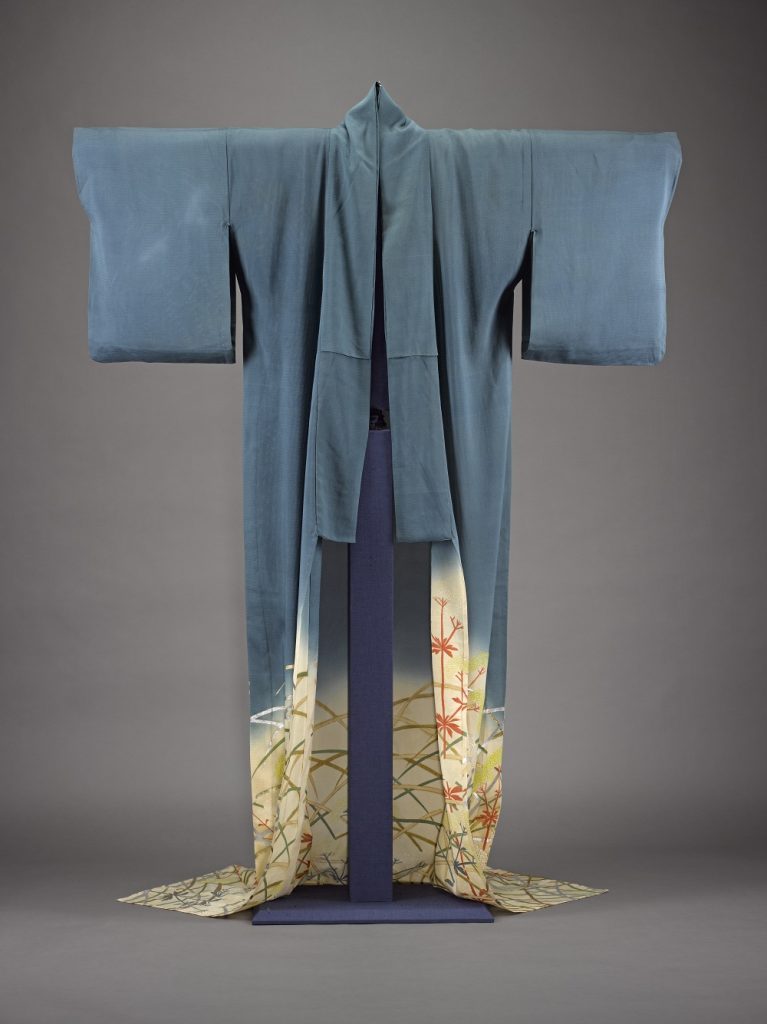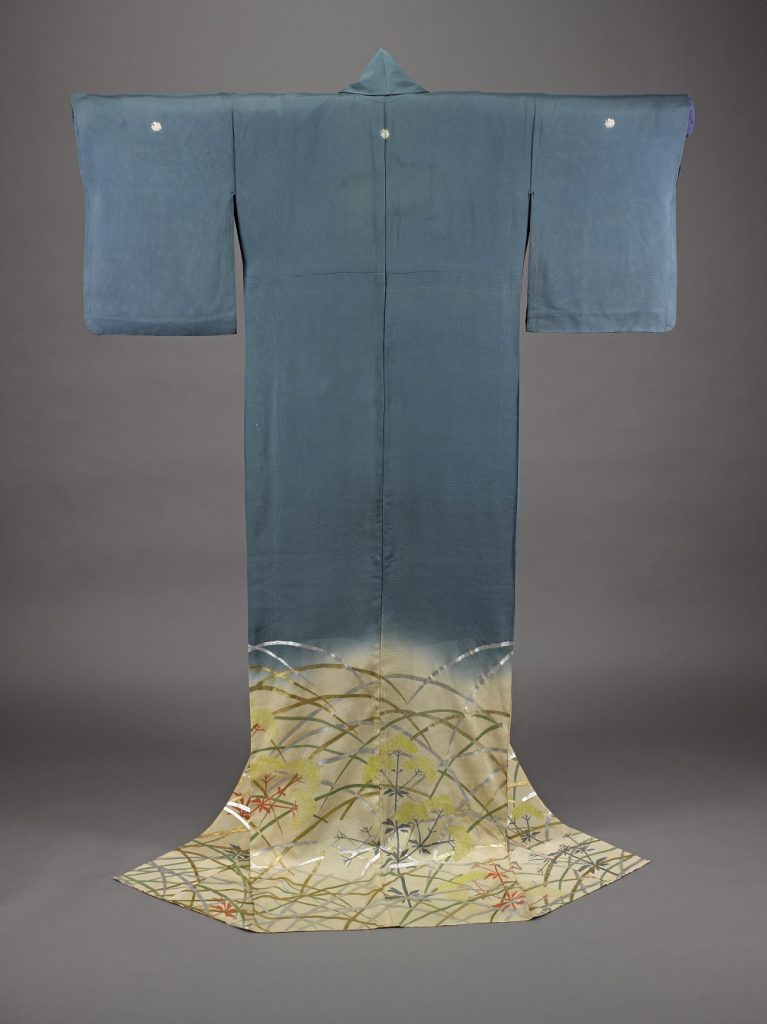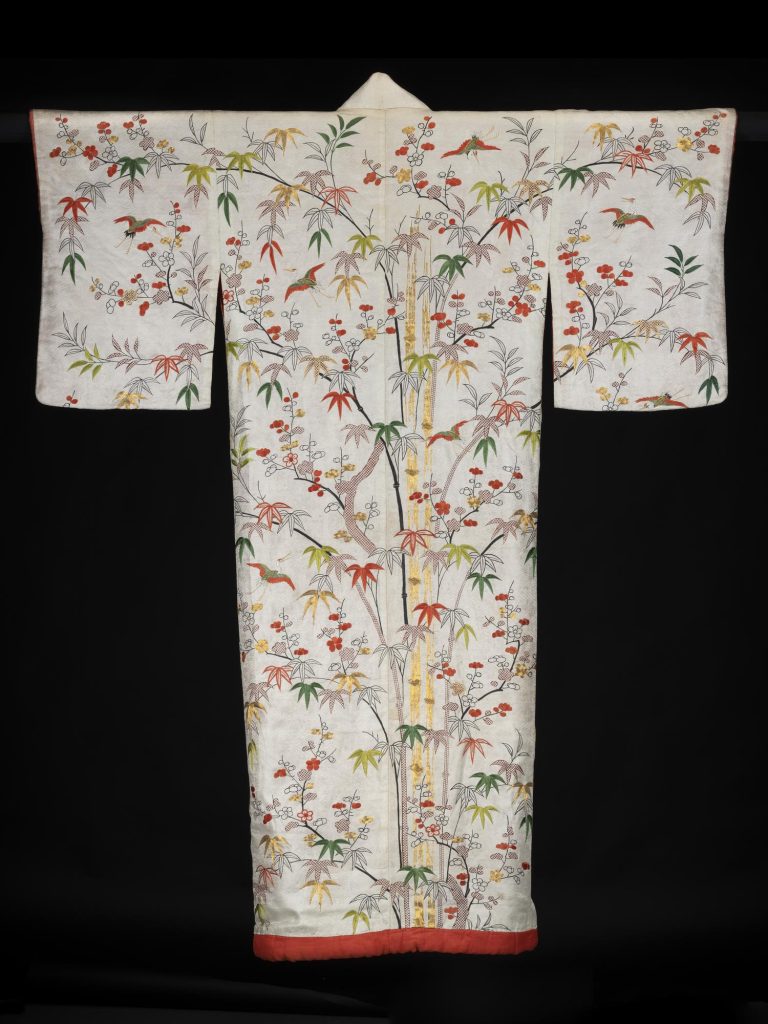The intricate designs and sophisticated craftwork of Japanese clothing captivated Europe when Japan began to open for trade in the late-19th century. A craze for the country’s fashion and art ensued. In this blog post, Marjolein de Raat, Japan Foundation Assistant Curator, looks at historical and contemporary examples of Japanese silk robes in our collections.
Our collections are home to more than 100 Japanese garments, ranging from casual everyday clothing to formal outfits, including a selection of sumptuous silk robes richly decorated with exquisite hand painting and embroidery.
The robes tell stories through the symbols and images that cover them, as well as the subtle adaptations made for a global market hungry for kimono. They are gorgeous examples of needlework and patterns. We have some kimono which were made for special occasions and are very high class and beautiful items, but the whole collection is fascinating. When I lift the lid of a storage box, it’s like opening a treasure chest.
These garments deserve to be seen. That’s why I am leading a project to share information, images, and detailed descriptions of them online. My hope is that this will help a wider audience to experience these elegant garments as I have, and to and understand their place in Japanese culture.
Although we often use the word kimono to apply to all Japanese robes, its meaning is slightly different. The term translates as “thing to wear” and covers a wide range of garments which would have been worn for very different occasions, each with their own name.
The T-shaped garments are wrapped to adjust the length and width to fit the wearer, while personal style is expressed through choice of colour, design, and combining accessories. A wide belt called an obi is used to keep them closed and the style of the knot that fastened it can reveal the wearer’s social status, for instance if a woman is married or not.
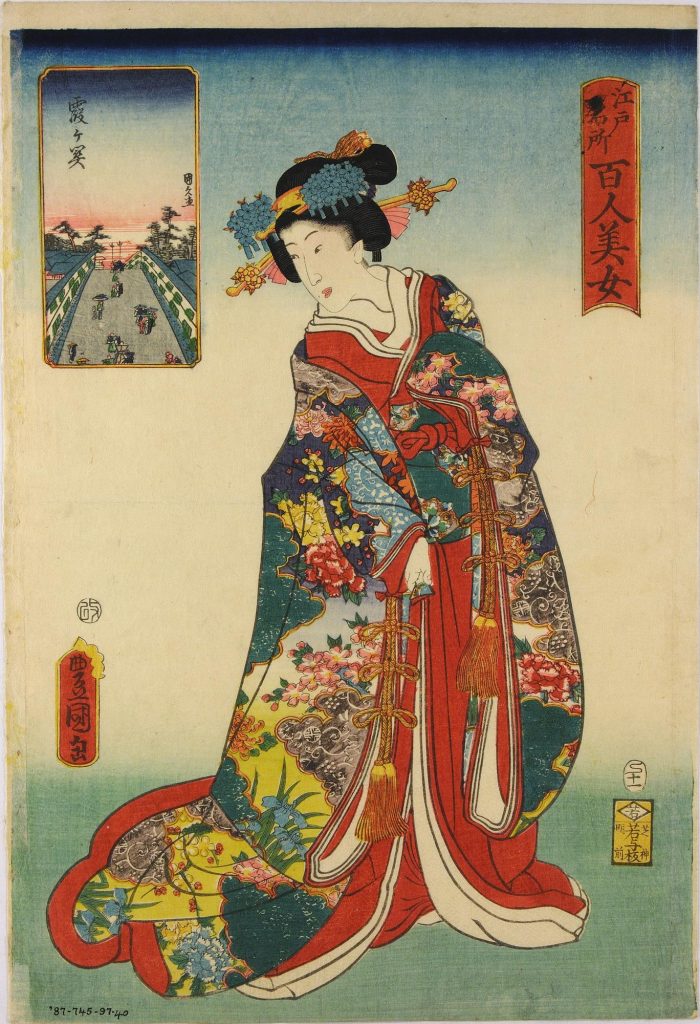
Because the shape of the garment is uniform, all the personality and individuality come from the decoration. It’s often been compared to a canvas for an artist to showcase their work on. In autumn you would wear a robe that shows lovely autumn leaves and in spring you would have cherry blossoms on your clothes.
One of my favourite decorations is the combination of bamboo, pine trees and plum blossom, known as ‘the three friends of winter’. They’re a symbol of resilience and endurance, but also new life and renewal. An example of these symbols can be seen on the woman’s robe which is on display in the Exploring East Asia gallery at the National Museum of Scotland.
The white silk is hand-painted with plum blossom and embroidered with plum, bamboo and cranes – birds which traditionally signify long life. Some of the embroidery thread was wrapped in gold leaf to give an even more radiant and luxurious effect, making the robe shimmer as it caught the light.
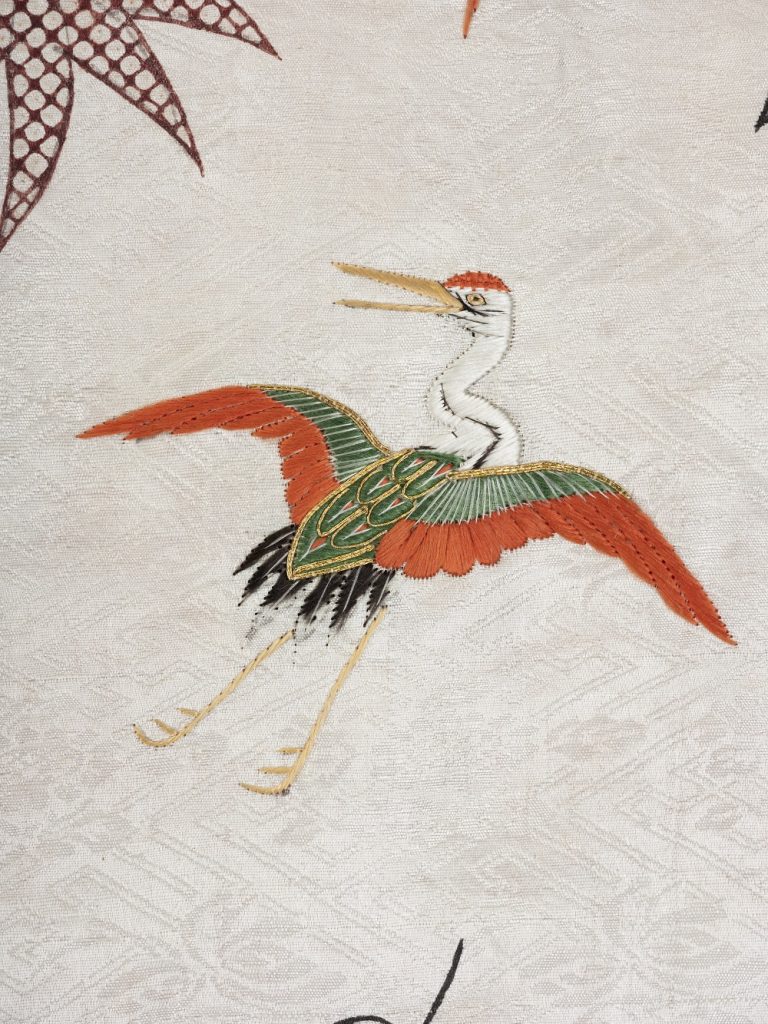
These works of art are meant to be worn. They’re beautiful when they’re on display but they would have been even more beautiful when they were actually on a body. Although the most ornate pieces would have been reserved for formal occasions in Japan, the European collectors who bought them would often use them rather differently and ask for adaptations to be made.
From the very early 17th century until 1868, a time known as the Edo period, access to Japan for outsiders was strictly limited by the Tokugawa Shogunate. The only Europeans allowed to trade with the country were the Dutch. Dutch traders sometimes received kimono as gifts and they started ordering them to be adjusted to the Dutch climate, asking for padding or a straighter sleeve. They were worn by men in informal settings; portraits depict these learned and wealthy men in their library with one of these robes to show how worldly they were.
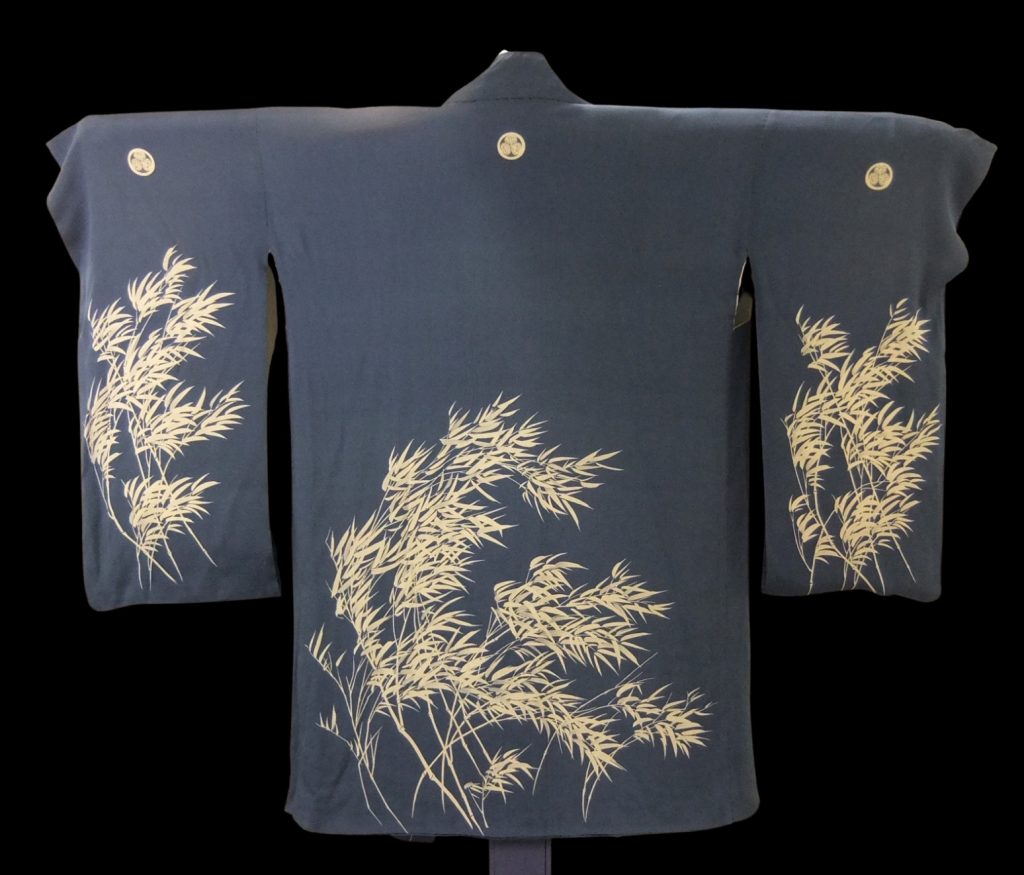
In the latter half of the 19th century, Japan was suddenly opened for international trade and there was a big craze for Japanese items. In Europe and America, the garment was now predominantly worn by women and had a huge influence on fashion. Worn loosely wrapped without the stiff obi, it was an informal, comfortable garment you could wear at home that showed your status as a wealthy person with international connections. It’s often easy to tell whether a kimono was made for export: additional side panels would be added to accommodate the wide skirts and petticoats, and foreign customers favoured styles and colours that would by then have been old-fashioned for the Japanese.
While the clothing in our collection dates from the late Edo period to the 20th century, the robes we associate with the term kimono are still a part of Japan’s present. They continue to be made and to influence contemporary fashion. In the last two decades, vintage kimono have become popular in street fashion, worn in experimental and non-traditional ways. The fabric of older, unwearable kimono is finding a new lease of life being repurposed into accessories and home decorations , bringing kimono into entirely new contexts.

Another recent adaptation of traditional kimono fabric is as face masks. There are also new kimono being made with popular modern designs, like Hello Kitty, or from unconventional materials like denim. All this is part of the revival of kimono as modern wear by the younger generation, which is very exciting to see!

